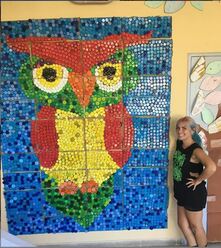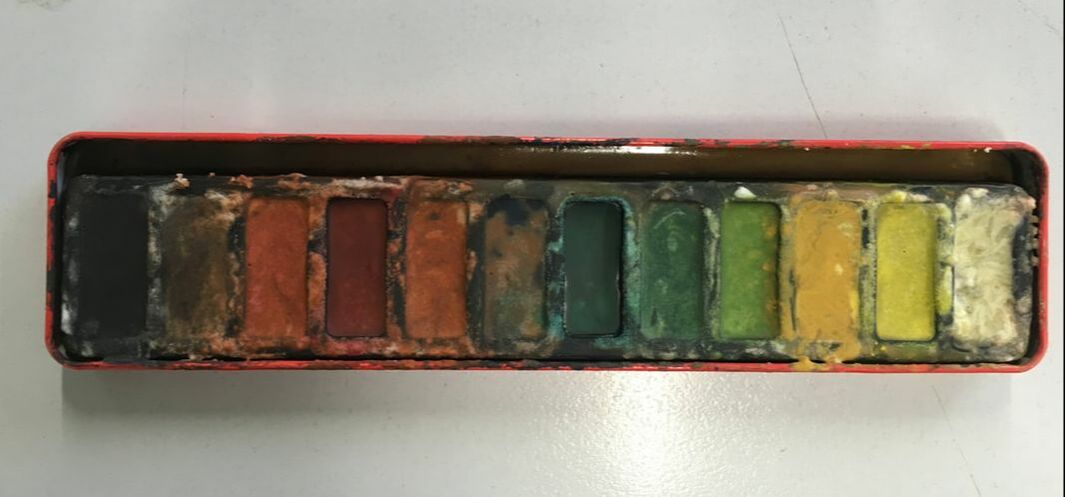The Sustainable art classroom: a teaching and learning philosophy
My mother never throws anything away. My parents' basement is overflowing with magazines, potential (and abandoned) household projects, nick-knacks, childhood art, clothes and broken toys from my brother and I, and many things nobody is exactly sure the intended use for, let alone where they came from and how long they have been there. Despite semi-regular drop-offs to shelters and thrift shops, it seems as though the collection of stuff is never ending, pouring out of all the nooks and crannies in the now empty nest.
So I guess it is no wonder I became an art teacher. I grew up collecting, recycling, up-cycling, and seeing the potential beauty in anything that probably should be headed to the landfill. It's simply in my nature to collect all the leftover pizza boxes from the teachers lounge, beg the cleaning staff to save the paper towel rolls, and scour co-workers recycling bins for old worksheets I could use as scrap paper.
But despite what I consider both a learned and intuitive trait of material resourcefulness, nothing could prepare me for the eye -opening, sheer amount of waste a creative and engaging elementary art classroom can produce. As a teacher that encourages risk taking, embraces mistakes, and values process over product, there are a lot of half-used papers, empty glue stick canisters and excessive paint pouring. Its no secret that art supplies are expensive (especially when purchasing for over 300 curious, eager hands) and that the arts in schools are underfunded - and I suppose I don't even have to delve into the environmental impact of a wasteful classroom.
So in my first years of teaching, I have slowly begun collecting lessons (and developing general classroom habits) that not only use recycled materials and work towards a self-sustained art class, but encourage young minds to consider their use of materials, and to see the potential in everything. I will continue to add to this master-post as my develop more lessons and expand my own understanding of what it means to create a sustainable studio for children to learn and grow.
So I guess it is no wonder I became an art teacher. I grew up collecting, recycling, up-cycling, and seeing the potential beauty in anything that probably should be headed to the landfill. It's simply in my nature to collect all the leftover pizza boxes from the teachers lounge, beg the cleaning staff to save the paper towel rolls, and scour co-workers recycling bins for old worksheets I could use as scrap paper.
But despite what I consider both a learned and intuitive trait of material resourcefulness, nothing could prepare me for the eye -opening, sheer amount of waste a creative and engaging elementary art classroom can produce. As a teacher that encourages risk taking, embraces mistakes, and values process over product, there are a lot of half-used papers, empty glue stick canisters and excessive paint pouring. Its no secret that art supplies are expensive (especially when purchasing for over 300 curious, eager hands) and that the arts in schools are underfunded - and I suppose I don't even have to delve into the environmental impact of a wasteful classroom.
So in my first years of teaching, I have slowly begun collecting lessons (and developing general classroom habits) that not only use recycled materials and work towards a self-sustained art class, but encourage young minds to consider their use of materials, and to see the potential in everything. I will continue to add to this master-post as my develop more lessons and expand my own understanding of what it means to create a sustainable studio for children to learn and grow.





